|
Crystal Detectors |
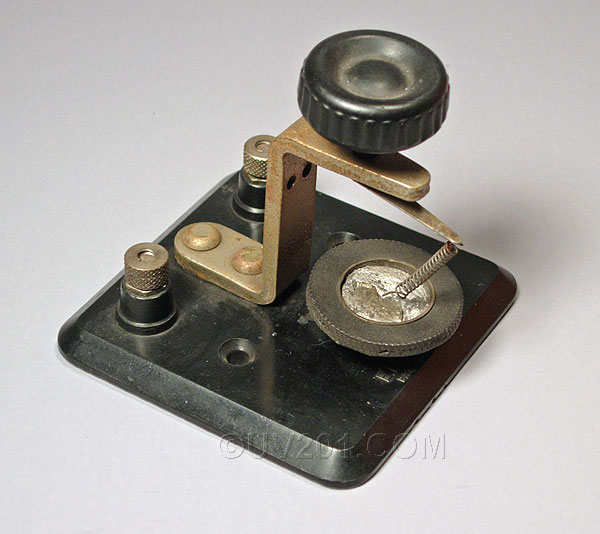 |
| This page
presents an assortment of crystal detector units which were made
between 1910 and 1925. In most cases, the "crystal" is a piece of galena (lead sulfide), though other minerals were used as well, including silicon, pyrite ("fool's gold"), and a number of others. A mount was required to hold the crystal, forming one connection, and to provide a second contact which was most often through a stiff wire that lightly touched the surface of the crystal. This wire came to be called a "cat's whisker". The standard electrical symbol for the semiconductor diode immortalizes this arrangement.
With these primitive devices, it was necessary to experimentally find a "sensitive spot", so a method of moving the crystal and/or the contact was provided, and to alter the pressure of the contact. The detector shown above was made and sold by the Electro-Importing Company of New York. It is marked "E. I. Co. N.Y. Pat. Appl. For". This company was one of the pioneering distributors of wireless, radio, and electrical apparatus, and was founded in 1904 by author and publisher Hugo Gernsback. This detector is shown below in a scan from their 1918 catalog. The binding post caps may not be original, as they don't match any of the catalog illustrations, though that is by no means conclusive. The base size (3 inches square) does not match the catalog description either. No patent appears to have been granted for this design, but Hugo Gernsback was granted a patent for a relay using a similar design. Patent 978,999 was filed and issued in 1910, so it is likely that he attempted to patent this detector in that same period of time. |
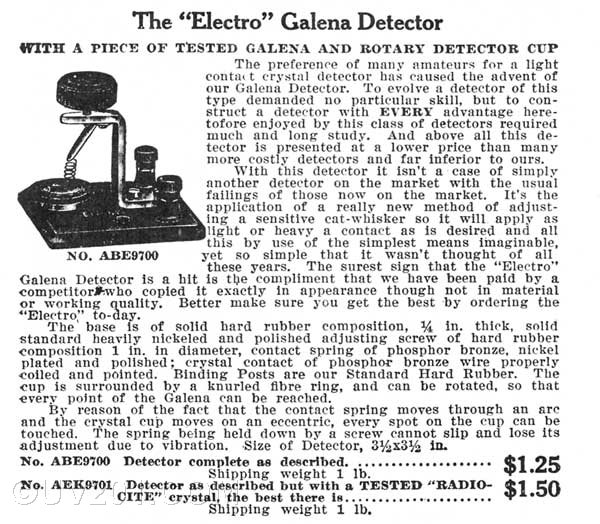 |
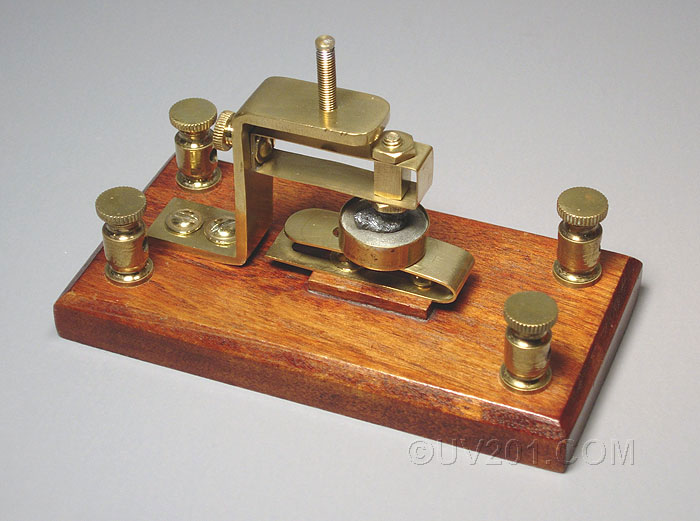 |
| There are no markings on
this early detector unit. As a guess, I would say that it dates to
about 1912-1915. It is well made, so it is either a commercial product, or one that was fashioned by an above average
craftsman. It is the only detector that I have seen that used a
wooden base. It's design is very similar to one that was sold by the Electro Importing Co. as shown below in a scan from their 1913 catalog. The threaded rod at the top is used to apply and adjust the pressure of a blunt point contact on the surface of the crystal. There was originally a knob on the end of this rod, probably made of hard rubber, which is now missing. The crystal can be rotated and slid along its mount to give additional degrees of adjustment. The detector is a two-terminal device, so there is no specific need for four binding posts. They are connected together in pairs, so this may only have been done to facilitate connections. The base is about 5 inches long and 2 1/2 inches wide. The crystal in this unit may be silicon, which required a heavier contact than galena, hence the use of a blunt point contact. I would appreciate an email from anyone who recognizes this detector. |
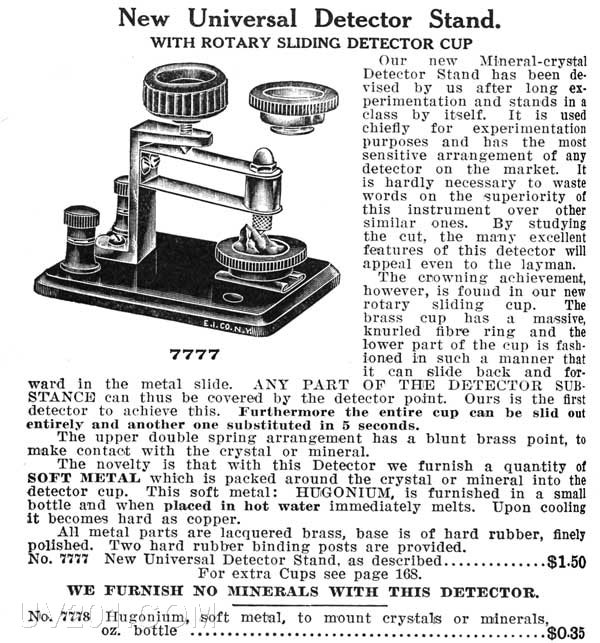 |
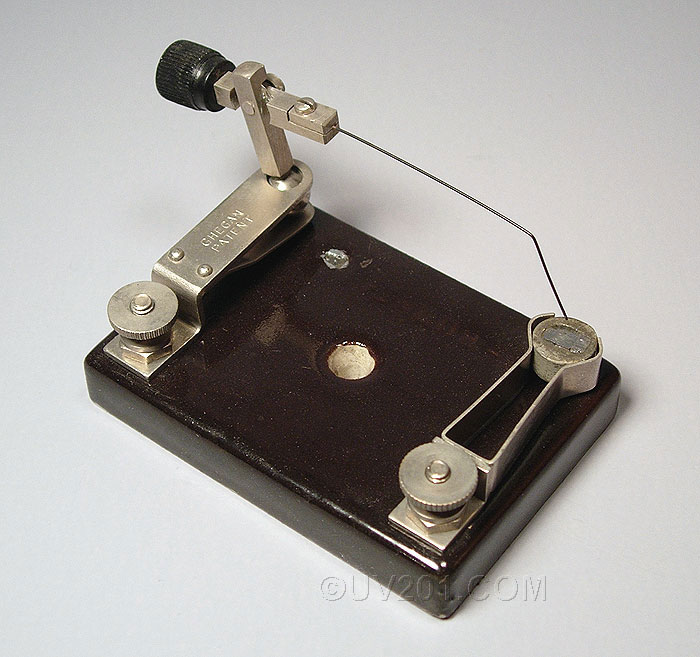 |
| This detector was made by the J. H. Bunnell
company circa 1916, and was known as the "Jove" detector. Bunnell
was the largest U.S. manufacturer of telegraph equipment, and as
wireless telegraphy came into widespread use, they expanded into that
realm, though they were never a major player in that market. The Jove detector was available either with a porcelain or Bakelite base. The porcelain base, as seen above, was heavily coated with a very dark brown glaze. The Bunnell name appeared in raised letters directly below the cat's whisker, but the glaze was so thick that the name was almost illegible. The Bakelite version had only the word "Jove" to identify it. Both versions were marked with the words "Ghegan Patent", a reference to patent number 1,162,765, issued on Dec. 7, 1915. This was John Ghegan, one of Bunnell's most prolific designers, who became president of the company in 1903. The base measures about 3 1/4 by 2 1/4 inches. The adjusting mechanism is particularly nice, and is what you might expect from a company whose primary business was building precision mechanical devices. They appeared to have used two styles of binding posts on these units. A Jove detector can be seen in a vintage photograph elsewhere on this site. That detector uses the same binding posts as seen in the Bakelite based detector shown below, which tends to confirm that these are original parts. |
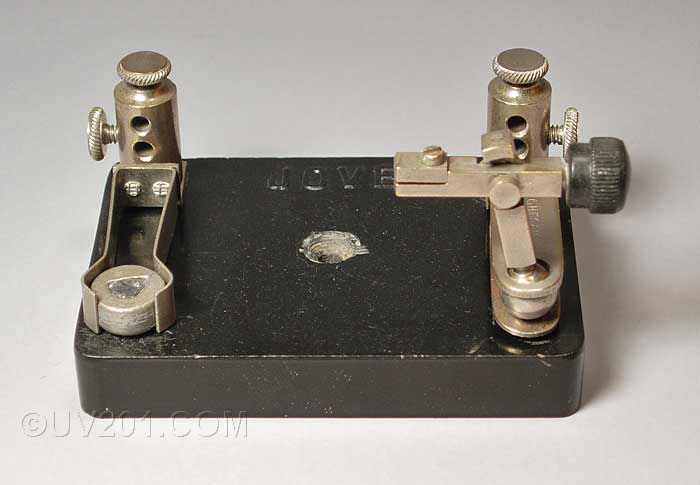 |
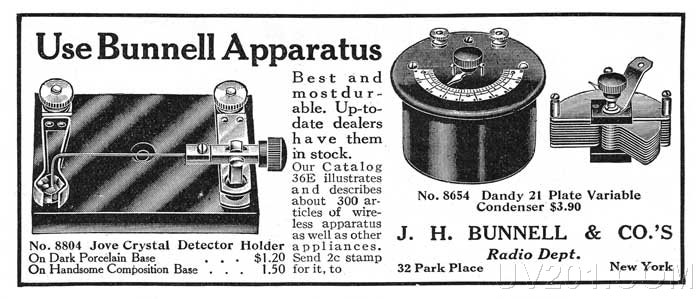 |
| This advertisement for the Bunnell Jove detector appeared in the February, 1917 issue of the Electrical Experimenter magazine. |
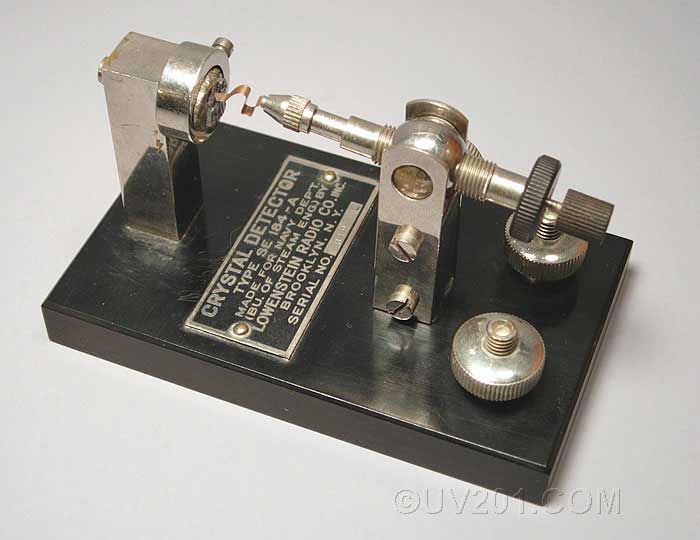 |
| This beautifully made and very robust type SE-184-A detector unit was made by the Lowenstein Radio Company for the U. S. Navy, circa 1918. The Bakelite base is about 4 1/4 by 2 1/2 inches and is 1/2 inch thick. |
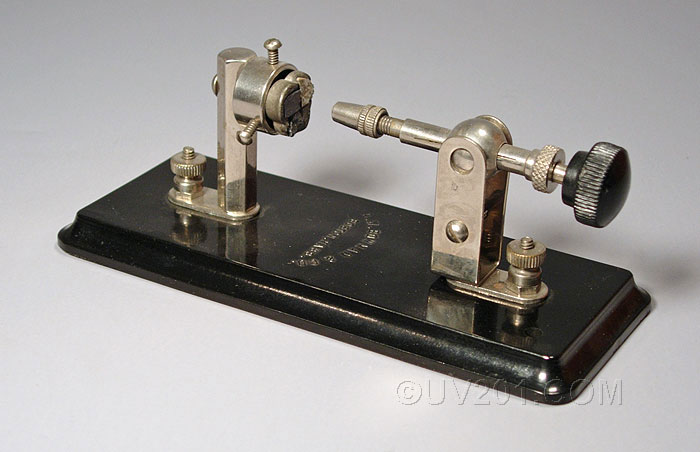 |
|
This detector was made by A. W. Bowman & Company of Boston, Massachusetts. The Bakelite base measures 6 by 2 1/2 inches. Though not original, this detector is equipped with three different minerals which could be selected for use by positioning the cat's whisker (which is missing) onto the surface of the desired crystal. This detector was sold by the Sears Roebuck company, and can be seen in an excerpt from a 1924 Sears radio catalog below. Click here or on the image to see the whole page. |
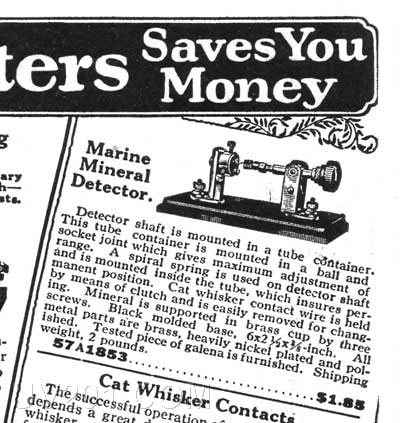 |
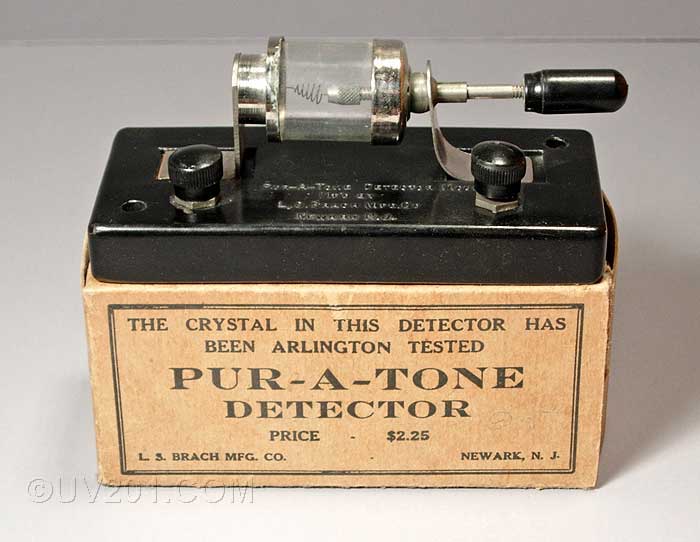 |
|
This Pur-A-Tone detector dates to the early 1920's, and is shown with its original box. The protective glass sleeve was commonly used to keep dirt and finger oils off the crystal. The Navy transmitted time signals from its station NAA located in Arlington, Virginia, at 2500 meters (33 kHz) starting in 1913. It's transmissions were so reliable that they were used as a test signal for radio equipment. If you couldn't get NAA, you knew you had a problem. |
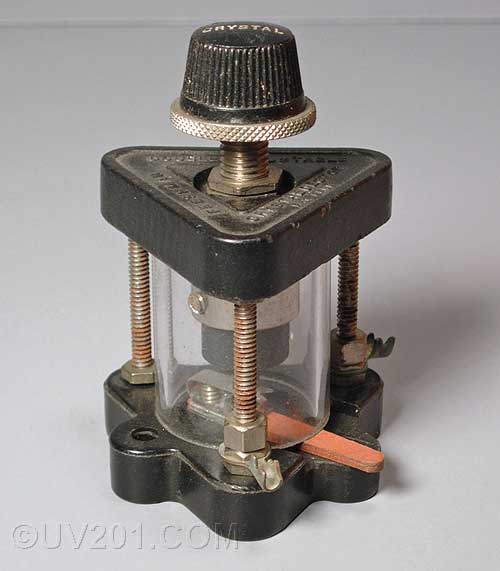 |
|
This detector was made by the Charles Freshman company in the early 1920's. The knob at the top rotated the crystal holder, and the lever at the bottom adjusted the position of the cat's whisker. |
